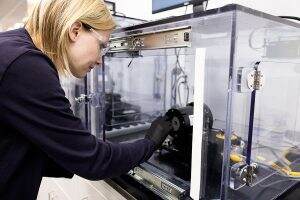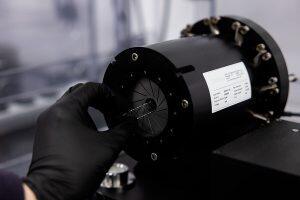Radial Force
Testing Services
 What is radial force testing?
What is radial force testing?
Radial force testing is an important specification or criteria for device design and development, FEA validation, and regulatory approval. Generally, when we speak about radial force testing, we are referring to the measurement of radial stiffness and strength, chronic outward force during expansion, and radial reactive force during compression. Understanding and accurately measuring radial stiffness and strength, chronic outward force, and reactive forces can inform and advance medical device development and subsequent design iterations. Once force testing is indicated for a device, it then becomes critical to understand how these forces relate to established design requirements or clinically derived acceptance criteria. Also important to radial force testing is an understanding of how the device will respond once in the intended-use location in the body and whether the device will withstand long-term use.
Validated methods
Radial force testing is performed throughout the development process: early in the development process to benchmark against predicate devices, during computational analysis or FEA validation or material model development, and further into the development process to understand clinical relevance of the chronic outward force.
Our experiences as a medical device development firm have allowed us the understanding of not just how to run the test with an ISO/IEC 17025:2017 validated method perspective, but also from a “why we do this” test perspective.
 Range of testing and experience
Range of testing and experience
MED Institute radial force testing capabilities include the sling method and the iris method, with the ability to test diameters in the range of 0.5-55 mm. These methods were developed and validated on MSI segmented head radial force testers as well as with our tensile testing equipment. Correlation of these two methods and first principles of engineering help us communicate these results within a globally regulated environment. Force testing has been applied to a wide range of materials and devices, including balloon expandable and superelastic stents, absorbable stents and devices, consumer products, and women’s health products. An appreciation of clinically relevant factors and how they impact a specific device is valuable for design, development, and eventually regulatory approval. A specific example for vascular stents illustrates the important link between radial force testing and clinical relevance, where the FDA in their published guidance recommends “stent diameter as a function of uniformly applied external radial pressure” be reported.
Test Methods
· ASTM 3067
· ISO 25539 – 1, 2, 3
· Lab developed medical device testing method RF-300
White Paper: Radial Force
OUR COMMITMENT
We are committed to consistently performing services with high quality, that deliver exceptional results, and add value to the client’s business.
For client surveys sent in 2024, we received ratings of 4.98/5 points (13).
